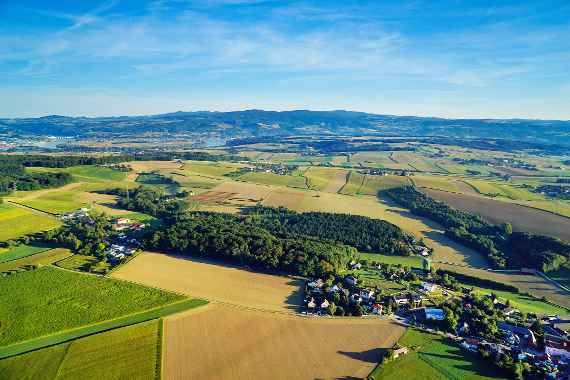Already since the foundation of the BAW-IKT in 1945, sampling and investigations started in this catchment area, which is drained by an approximately 600 m long stream. In the meantime, several hundred sensors have been installed in the HOAL for the permanent monitoring of various material flows.
Contact Person: Strauß P., Oismüller M.
Short Description:
Since 2009, monitoring within the HOAL Petzenkirchen is carried out together with the Technical University Vienna (Institute for Institute of Hydraulic Engineering and Water Resources Management, Prof. Günter Blöschl). This headwater catchment of about 66 ha contains hundreds of sensors to monitor data such as precipitation, temperature, wind, water flow (surface runoff, drainage, spring flow), sediment load, water chemistry and soil moisture. Many of these parameters are measured with highest spatial and temporal resolution. In addition, manual sampling and field campaigns take place on a regular basis. Analytics are mainly carried out within the premises of BAW-IKT, particular analytical procedures such stable isotopes are carried out together with cooperation partners. It is the dedicated aim of the HOAL to monitor, measure and balance water flow and nutrient as well as matter transport with high resolution. Results will also be used for modelling purposes to allow drawing conclusions about past, present and future developments for the complex interaction between agriculture and water management.
Publications:
Blöschl, G., Blaschke, A. P., Broer, M., Bucher, C., Carr, G., Chen, X., Eder, A., Exner-Kittridge, M., Farnleitner, A., Flores-Orozco, A., Haas, P., Hogan, P., Kazemi Amiri, A., Oismüller, M., Parajka, J., Silasari, R., Stadler, P., Strauss, P., Vreugdenhil, M., Wagner, W., and Zessner, M. (2016). The Hydrological Open Air Laboratory (HOAL) in Petzenkirchen: a hypothesis-driven observatory, Hydrol. Earth Syst. Sci., 20, 227-255, doi:10.5194/hess-20-227-2016.
Eder, A., Exner-Kittridge, M., Strauss, P. and Blöschl, G. (2014). Re-suspension of bed sediment in a small stream – results from two flushing experiments. Hydrology and Earth System Sciences, 18, 1043–1052. doi: 10.5194/hess-18-1043-2014
Eder, A., Strauss, P., Krueger, T. and Quinton, J. N. (2010). Comparative calculation of suspended sediment loads with respect to hysteresis effects (in the Petzenkirchen catchment, Austria). Journal of Hydrology 389, 168–176. doi:10.1016/j.jhydrol.2010.05.043
Exner-Kittridge, M., Strauss, P., Blöschl, G., Eder, A., Saracevic, E. and Zessner, M. (2016). The seasonal dynamics of the stream sources and input flow paths of water and nitrogen of an Austrian headwater agricultural catchment. Science of The Total Environment, 542, Part A, 935-945, doi:10.1016/j.scitotenv.2015.10.151.
Silasari, R., Parajka, J., Ressl, C., Strauss, P. and Blöschl, G., (2017). Potential of time -lapse photography for identifying saturation area dynamics on agricultural hillslopes. Hydrological Processes. 2017;1-18. https://doi.org/10.1002/hyp.11272
Stadler, P., Farnleitner, A.H., Zessner, M., (2017). Development and evaluation of a self-cleaning custom-built auto sampler controlled by a low-cost RaspberryPi microcomputer for online enzymatic activity measurements. Talanta 162, 390–397. doi:10.1016/j.talanta.2016.10.031
Strauss, P., Leone, A., Ripa, M. N., Turpin, N., Lescot, J.-M., Laplana, R. (2007). Using critical source areas for targeting cost-effective best management practices to mitigate phosphorus and sediment transfer at the watershed scale, Soil Use and Management, 23 (Suppl. 1), 144-153.

